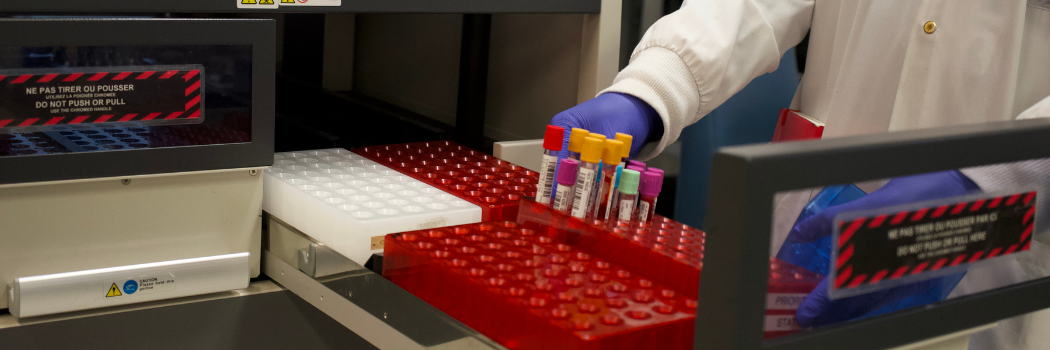The journey of a blood test
We have all had a blood test before, but have you ever wondered what happens once the needle is removed and the vial is sent off? At the MUHC Central Laboratory, part of the OPTILAB laboratory network, your sample embarks on a journey where it is carefully examined by a dedicated team of professionals using cutting-edge technology.
This lab processes thousands of specimens daily and provides an expansive test menu including chemistry, hematology, coagulation, immunology, endocrine testing, urinalysis, blood gas analysis and therapeutic drug monitoring. From simple blood tests to highly specialized tests identifying blood cancers, the Central Laboratory not only supports the Glen site but also other sites within its Optilab network, including Abitibi-Temiscaming.
With each sample, a seamless combination of advanced automation and expert analysis helps your doctor make the right diagnosis. Let’s dive deeper into the lifecycle of a blood sample, focusing on tests like the Complete Blood Count (CBC) and blood chemistry tests, and discover the precision and care that goes into every step of the process.
Step 1: Delivery via Pneumatic Tube System
At the Glen site, blood samples are transported to the Central Lab via the Pneumatic Tube System.

Step 2: Triage
Upon arrival, laboratory technicians assess the integrity of the specimens and triage the samples based on priority.
Step 3: Testing pathways
After triage, each sample moves through the laboratory’s automation line. The automation line scans the barcode on the sample, receptioning the specimen in its system and forwarding it to the appropriate analyzer for testing.
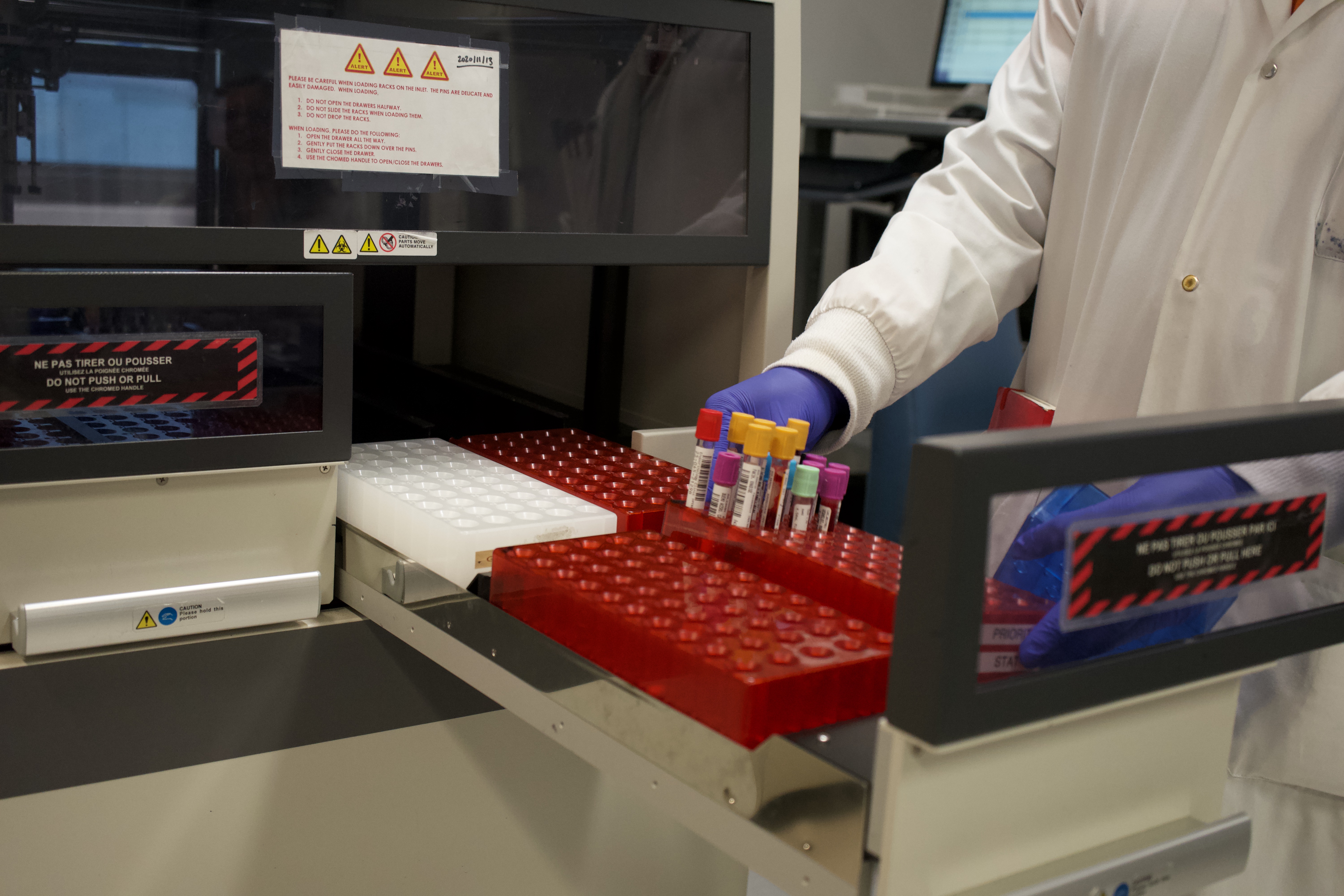
Depending on which tests were requested, the specimens follow different paths on the automation line:
For a Complete Blood Count, the purple top tubes are sent directly to the hematology analyzer for testing. These tubes contain a chemical additive that prevents the blood from clotting, allowing for the analysis of all blood components (red blood cells, white blood cells and platelets).
- If the results are abnormal, the analyzer prepares a blood smear for microscopic examination by a medical technologist. In performing a microscopic examination of the blood smear, a medical technologist can look for abnormalities in the appearance of the cells, which can indicate conditions like infection, anemia and leukemia.
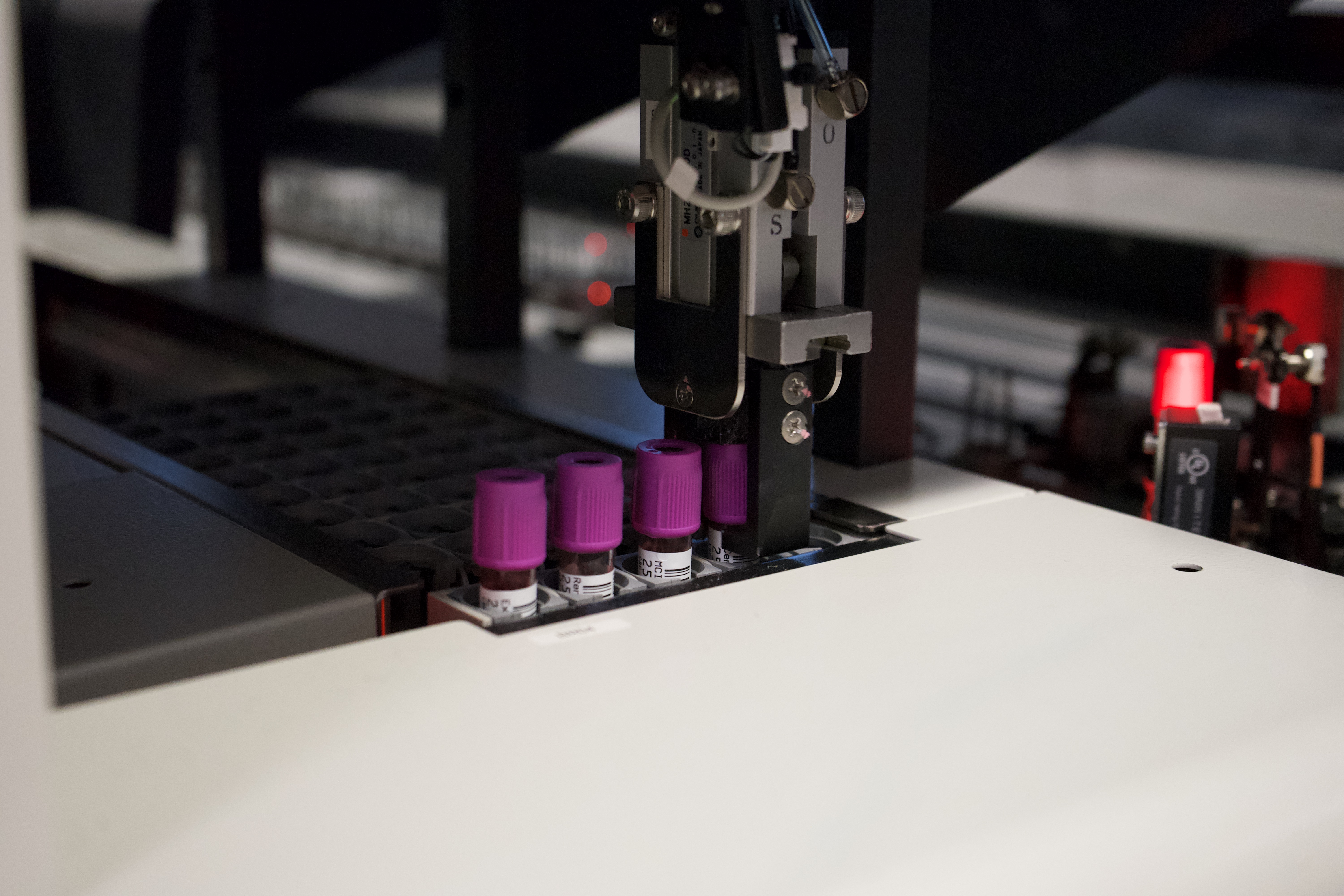
For general chemistry tests (electrolytes, glucose, liver function, kidney function, etc), the yellow top tubes do not contain a chemical additive which allows the blood sample to clot and allow for the separation of serum (liquid part of blood).
- These tubes are first sent to a centrifuge, which separates blood into its components (red blood cells, platelets, and serum), by spinning the tubes at a high speed. The tubes are then sent to an uncapping machine, which removes the caps, allowing the samples to be processed in the chemistry analyzer.
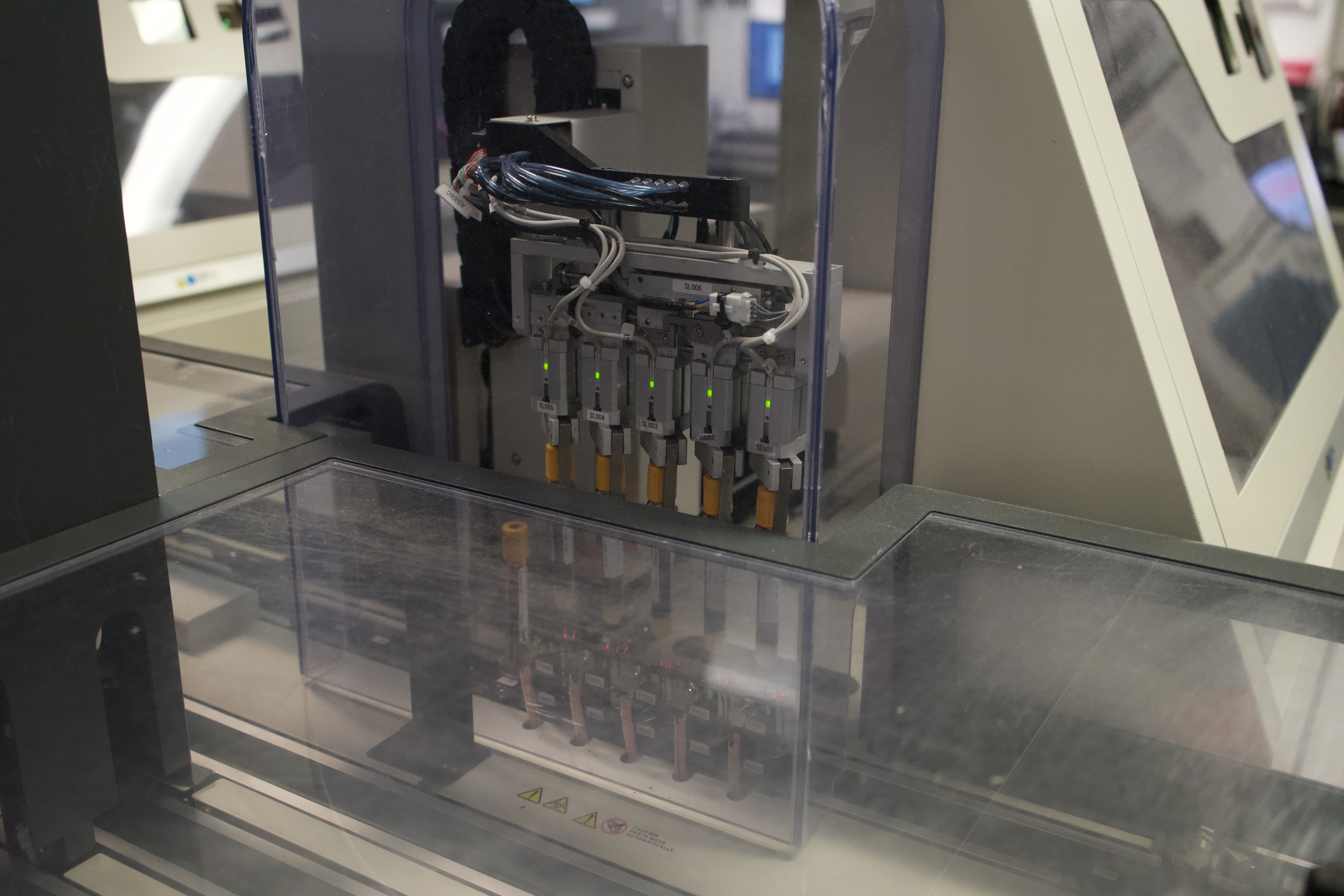
Step 4: Result validation and Command Centre review
Test results that fall within the normal, acceptable range are automatically validated by the laboratory information system and sent directly to the requesting physician. Abnormal results are sent to the Command Centre, where a medical technologist who verifies the accuracy of the result reviews each one. If the result falls within a critical range, the ordering physician is immediately contacted with the result.
Your doctor relies on these results to make timely, informed decisions about your care. Whether it is confirming a diagnosis or adjusting a treatment plan, the accuracy and speed of the test results are critical.

Step 5: Storage
After analysis, blood samples are stored for approximately four days. The chemistry yellow-top samples are recapped with a blue cap to maintain sample integrity during storage.
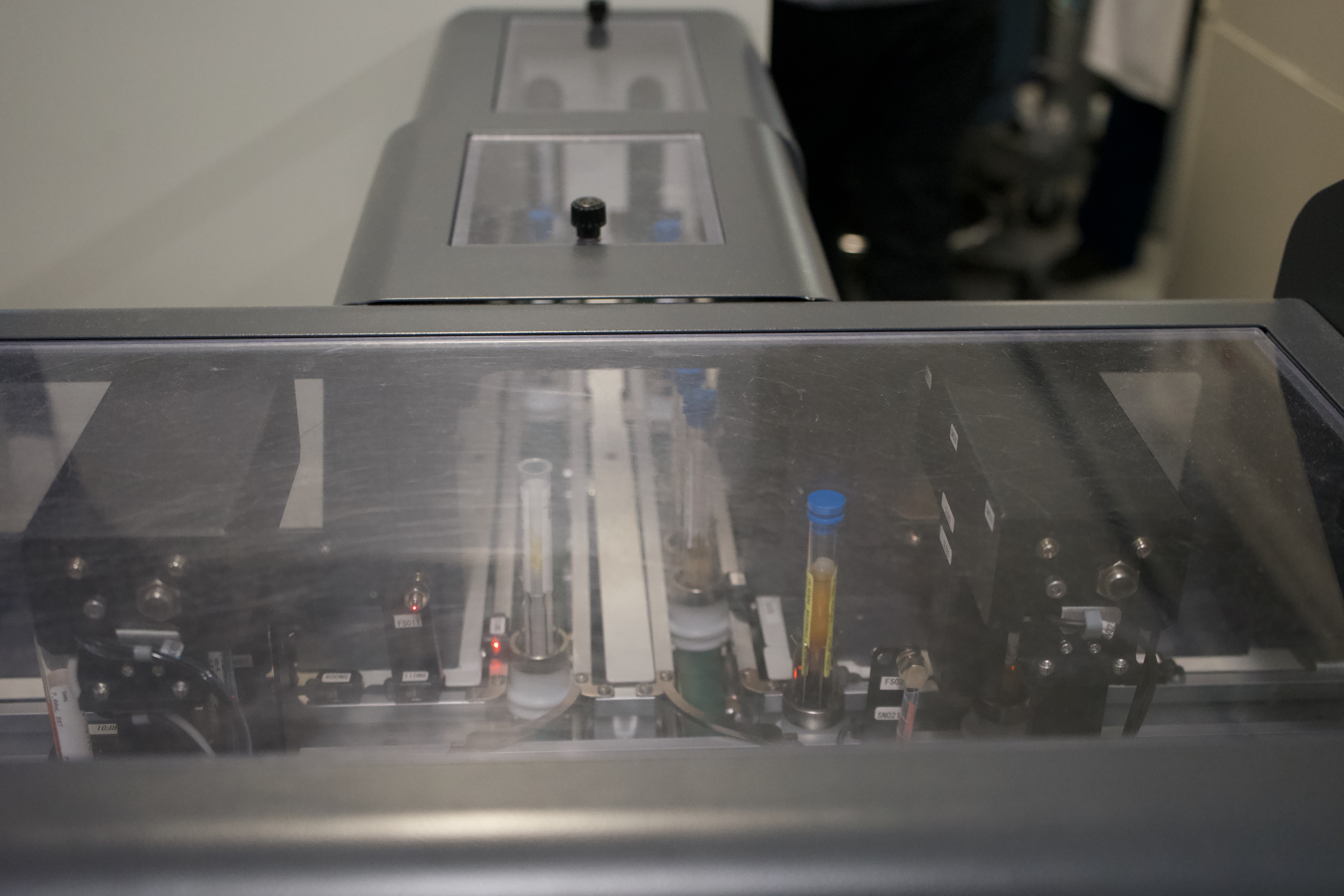
These are just two examples of the thousands of samples processed at the Central Lab every day. While automation plays a key role in ensuring speed and efficiency, the expertise of the medical technologists and laboratory technicians ensures both the accuracy and reliability of the results. This combination of cutting-edge technology and skilled professionals allows the Central Lab to efficiently handle large volumes of tests each year, providing your doctor with the vital information needed to deliver the best care possible.

